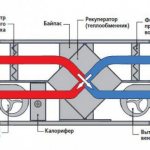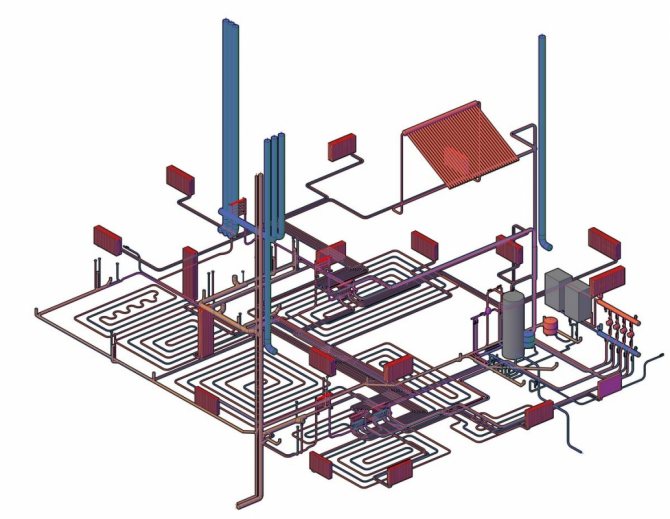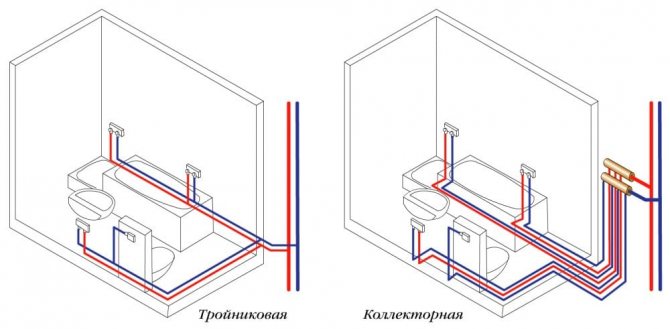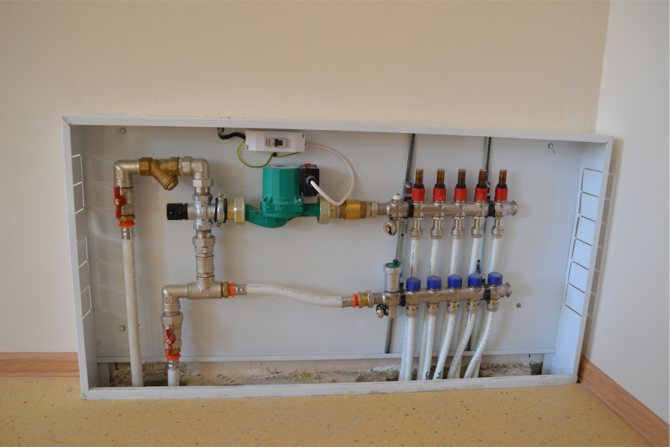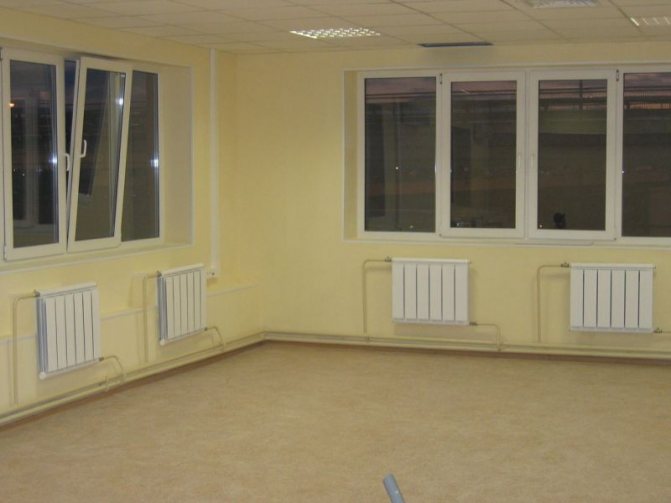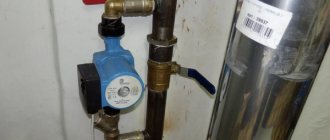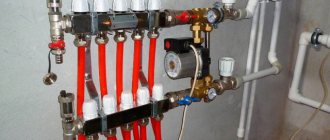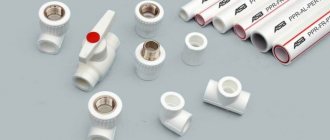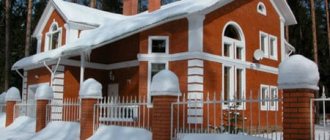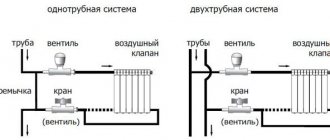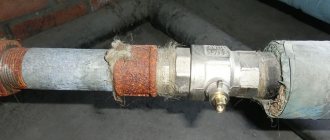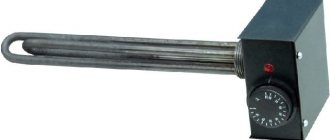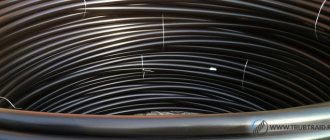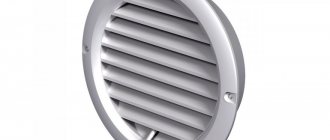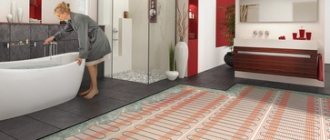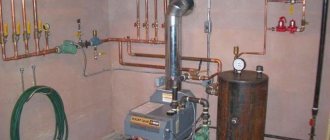Studying additional information, you can learn how to do many things on your own, without resorting to the help of professionals, on whom most of the money is spent when paying for services. their skills in practice, making mistakes and overcoming difficulties that have arisen on the way. At first, all this may seem very difficult, but this is a really real chance to save a lot on production, as well as develop your skills by learning something new in the process.
Types of heating systems
Modern engineering systems, intended for heating country houses, can be:
- One-pipe. These are structurally simple and fairly common systems. Their advantages include low cost and ease of assembly. The disadvantages are uneven heating of rooms located at an unequal distance from the boiler.
- Two-pipe. Systems of this type are excellent for heating large houses and cottages. Their assembly is more expensive than installing one-pipe systems. However, heating the premises with their use can be more efficient.
Also for heating houses systems can be used:
- With natural circulation of the coolant. In this case, the water moves along the highways due to the pressure drops at the inlet and outlet by gravity. This happens because its density can vary quite a lot depending on the heating temperature.
- Forced circulation. Systems of this type are somewhat more complex to assemble. However, heating radiators included in their design warm up much more evenly than in one-pipe designs. In this case, the movement of the coolant along the highways occurs as a result of the operation of the circulation pump.
One-pipe heating system
Such systems are usually assembled only in one-story buildings small area. In this case, one line is included in the design, which is both supply and return. It can be laid under the floor or directly along the wall. Radiators in such systems are installed on a bypass with a shut-off valve. Such a scheme in the future facilitates their repair or replacement, and also allows you to regulate the air temperature in different rooms. The pipes themselves are installed with a slope of at least 0.005 m per linear meter towards the water flow.
Two-pipe heating systems
Equipment of this type is, as already mentioned, very convenient to operate, but also more difficult to install. There are only two types of two-pipe systems: vertical and horizontal. The first type is usually used in single-story houses. For two- and three-story cottages, a vertical two-pipe heating system is more suitable. In this case, two risers are installed: supply and return. The contours of each floor are connected to them.
Recommendations and Tips
In conclusion, I would like to give a few recommendations that may be useful.
- The installation of piping systems should be carried out taking into account the fact that tension fitting connections must not be laid in the floor and walls. If this happens, then a small free space must be left to place the connections.
- Radiators should be within 70% of the window width.Panel radiators will be able to fulfill this condition. Changing the thickness of the device allows you to change its overall dimensions, and choosing the best option is not difficult
- The installation of smoke exhaust systems should not pass through rooms with a long stay of people. With an external chimney, it should be borne in mind that the distance from it to the windows of living quarters must be at least 800 mm
- When using non-freezing antifreeze liquids as a heat carrier, sectional radiators must not be installed. After a certain time, nipple connections may leak
- The use of a room thermostat with an on-timer allows you to save up to 40% of energy consumed for heating
There is still a huge number of subtleties and nuances. If you do not have experience, knowledge, working skills, then it is better to entrust the installation of heating systems to a trusted Contractor. The usual cost of work is estimated at 30-40% of the price of equipment and materials.
The best option is to conclude an Agreement with a company that will carry out all the turnkey work - develop a scheme or complete a project, complete the equipment and install it. Practice shows that the installation of turnkey heating systems helps the Customer to significantly save money. It is necessary to pay attention to the fact that the Warranty is provided for all materials and works.
Read other articles on this topic
| How to heat your home without gas | Heating a private house from metal-plastic pipes |
| The best heating for a private house | Heating options for a frame house |
| Heating a private house with electricity | Installation of a heating system in a private house |
| Heating system of a private house with natural circulation | Heating a private house made of polypropylene with your own hands |
| About heating schemes for a private house with a gas boiler | Water heating in a private house |
| Private house heating project | Heating and water supply of a country house: a description of the installation technology |
| Heating wiring for a two-story house | Heating scheme for a two-story house |
| Features of heating a country house with electricity | Collector heating system of a private house |
| Heating wiring diagrams from a boiler in a private house | Gas consumption for heating a private house - consumption calculation |
| How to save on heating a country house | How to make heating a private house |
| Heating a house with liquefied gas | Autonomous heating of a private house |
Services on this subject
| Heating design | Turnkey solid fuel heating |
| Turnkey gas heating | Turnkey heating |
| Heating in a turnkey wooden house | Turnkey water heat-insulated floor |
| Installation of a water heated floor | Heating a two-story house |
| Heating installation in a cottage | Heating a country house: options and prices |
| Heating installation | Heating installation in a private house |
| Installation of engineering systems for water supply and heating | Diesel heating of a country house |
| Turnkey autonomous heating | Air heating of a country house |
| Prices for installation of heating in a private house | Design and installation of heating systems |
| Water heating in a private house | Electric heating of a country house: options and prices |
| Heating in a townhouse | Gas heating design |
| Heating design cost | Private house heating calculator |
| Installation of a water-heated floor in a private house | Price for installation of a water-heated floor |
| Installation of a water-heated floor on a wooden floor |
Types of heating boilers
Owners who decide to assemble a heating system for their home should first of all decide on what equipment will be used for this. And first of all, of course, you need to choose a suitable boiler... There are several varieties of such units:
- Gas. This is the most common type of equipment used in most cases.Connecting such a boiler is quite expensive. However, this type of equipment is quite economical in operation.
- Electrical. Equipment of this type costs the same as its installation, it is quite cheap. However, its operation costs the owners of the house much more expensive than gas units.
- Liquid fuel. Such boilers operate on diesel fuel. The owners of the house do not have to spend too much money on the operation of such equipment. However, it is not very convenient to use. After all, the fuel needs to be stored somewhere, and it is obligatory in compliance with all the required fire safety standards.
- Solid fuel. This is the cheapest type of boilers to operate. Such equipment works on wood, coal, briquettes, etc. However, using such boilers is even more inconvenient than liquid fuel ones. Firewood or coal has to be manually loaded from time to time.
Electric boilers are usually used to heat houses only where there are no gas mains. Liquid and solid fuel - in remote areas in the absence of nearby gas pipelines and power lines.
Ventilation system assembly sequence technology
Installation and assembly work on ventilation and air conditioning systems includes the following main sequentially performed processes:
- preparation of the facility for the installation of ventilation systems;
- reception and storage of air ducts and equipment;
- completion of air ducts, fittings and ventilation parts; selection and completing of ventilation equipment, and, if necessary, carrying out a pre-installation audit of the equipment;
- assembly of units; delivery of assemblies, parts and elements to the installation site; installation of fastening means;
- installation of equipment;
- enlarged assembly of air ducts;
- installation of main air ducts;
- manufacturing and installation of measurements;
- running-in of installed equipment;
- adjustment and regulation of systems;
- commissioning of systems.
When installing metal air ducts, the following basic requirements should be observed: do not allow the air ducts to rest on the ventilation equipment; vertical air ducts should not deviate from the plumb line by more than 2 mm per 1 m of the duct length; duct flanges and wafer joints should not be embedded in walls, ceilings, partitions, etc.
The installation of air ducts, regardless of their configuration and location, begins with marking and inspecting the installation sites in order to identify the most convenient ways of transporting and lifting the air ducts and missing fasteners. Then, the lifting means are installed at the design marks, the air duct parts are delivered to the installation work area and the missing embedded parts are shot. Further, enlarged blocks are assembled from individual parts in accordance with the picking list with the installation of clamps for hanging the air ducts.
When assembling on the flanges, make sure that the gaskets between the flanges ensure a tight connection and do not protrude into the duct.
Installation of ventilation equipment is carried out in accordance with standard technological maps in the following order: check the completeness of the delivery; make a pre-assembly audit; delivered to the place of installation; lifted and installed on a foundation, platform or brackets; check the correctness of installation, straighten and fix in the design position; check the performance. When supplying ventilation equipment in bulk, a number of operations for assembling and aggregating equipment are added to the listed technological operations, which can be performed directly at the installation site or assembly site. Installation method and methods of installation of ventilation equipment.
Natural and artificial systems
Ventilation can create air flow naturally or forcedly.The natural movement of air masses is created by differences in temperature and pressure. In forced systems, the air flow is provided by ventilation equipment.
The simplest diagram of a natural ventilation system is presented in typical typical buildings. In them, door and window openings provide air flow. Air is removed through ventilation ducts and hoods located, as a rule, in the kitchen and in the bathrooms. Natural ventilation has no automatic control, it is reliable, durable and easy to install. The main disadvantage of such systems is dependence on external factors that a person cannot influence. It is impossible to regulate such a system.
In the case when natural ventilation cannot provide a normal flow of air into buildings, artificial or forced schemes are used. They include various elements - fans, filters, air heaters, humidifiers, etc., allowing to provide normal microclimate values for any premises, depending on their purpose, be it residential, administrative or industrial.
Supply and exhaust systems
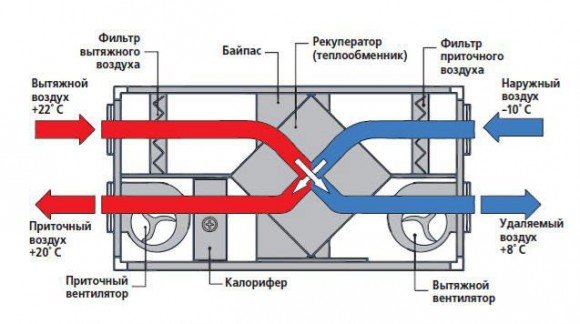
These systems differ in the direction of air movement. Supply ventilation supplies air to the interior of the premises. Depending on the elements included in it, the supplied air can undergo additional preparation - filtration, humidification or dehumidification, etc. The task of the exhaust systems is to remove polluted air from the building.
As a rule, combined supply and exhaust ventilation is used to ensure a normal microclimate in a residential building or industrial premises.
All elements of combined systems must be carefully balanced with each other. Otherwise, overpressure or too little pressure may form, and the effect of a “slamming door” will appear in the room.
Local and general systems
Local ventilation is most often used for industrial premises. The local supply option allows to provide a local supply of clean air, and the exhaust option allows to remove polluted air from the places where harmful substances accumulate. Local exhaust systems can be used to prevent the spread of toxic substances from production areas throughout the facility. In domestic conditions, local ventilation is widely used in kitchens in the form of an exhaust hood.
General, or general exchange systems are used to ventilate the air in all areas of the building. Supply general exchange systems are most often supplemented with elements for filtration and air heating. The hoods are characterized by a simpler design, since there is no need to process the exhaust air.
Typesetting and monoblock systems
Typesetting systems are pretty complex. They are assembled from individual components - a fan, filters, chokes, automation, etc. They surpass monoblock ones in the ability to ventilate any objects. They can be installed in a small office or apartment, as well as in public buildings. Such systems are well suited for warehouses, hangars and industrial premises.
Their disadvantage is the complexity of design based on professional calculations and overall dimensions. Powerful systems for industrial premises or buildings of a large area are mounted in a specially equipped ventilation chamber. Low power systems can be mounted behind a false ceiling.
Monoblock ventilation is contained in a single housing. Unlike type-setting systems, it practically does not make noise, so its installation can be carried out in residential buildings without equipment for ventilation chambers. Such systems differ from type-setting and ease of installation.
Varieties of radiators
For heating systems of country houses, cast iron, aluminum or bimetallic batteries can be used.The latter variety is the most popular. Cast iron radiators are quite reliable and efficient. However, they do not look particularly aesthetically pleasing. In addition, they are too heavy, and therefore inconvenient in installation. Aluminum batteries look modern and easy to install. But they have one very serious drawback. With prolonged contact with the air dissolved in the coolant, they begin to corrode, as a result of which they quickly fail.
Bimetallic radiators are devoid of all these disadvantages. Their aluminum body is protected by steel from the inside. And therefore, its contact with the coolant does not occur. Consequently, such radiators can be considered much more reliable than aluminum ones. Bimetallic batteries weigh a little, but they look very modern and aesthetically pleasing.
Which pipes to choose
Heating mains can be assembled by hand using pipes of the following types:
- Galvanized steel. This type of pipe has such advantages as durability and ease of maintenance. Galvanized lines do not rust and do not need to be painted. The disadvantages of such pipes are the high cost and the impossibility of the device when they are used in the heating system of a large number of joints.
- Conventional steel. Such pipes are inexpensive, but not very convenient to install and rather quickly fail due to corrosion.
- Polypropylene pipes. The material of this variety is easy to install and inexpensive. The disadvantages of polypropylene include the ability to delaminate due to uneven heating of the inner and outer surfaces. Therefore, for heating systems, it is allowed to use only pipes made of reinforced material of this type.
- Crosslinked polyethylene. Pipes made of this material tolerate the temperature difference outside and inside much better than polypropylene ones. However, they also have a rather serious drawback. It is impossible to mount them without using special equipment.
- Metal-plastic. Pipes of this type are most often used for the installation of heating systems. They are completely devoid of any shortcomings. Their advantages include, first of all, strength, elasticity, the ability to withstand any temperature difference and ease of installation.
For systems with natural circulation of the coolant, select pipes as large as possible... If this figure is very large (about 8-10 cm), you may not even include radiators in the system. Their role will be taken over by the highways themselves. But, of course, such a scheme can be used only in those rooms where aesthetics are not given special importance, or in very small houses.
The boiler is one of the best options for heating equipment
The choice of the type of boilers, first of all, depends on the energy carrier, pipes and the type of heating system.
There are several types of boilers:
Gas. They are very popular among consumers, as they are convenient and easy to use.
In addition, the technology for installing heating with a gas boiler is the simplest. However, due to the fact that not all cities and villages are gasified, the use of this type of boilers is limited.
Diesel boilers. Such units run on liquid fuel. They can be adjusted to the desired mode using a special control system. Liquid fuel for these boilers does not take up much space.
This type of equipment is quite hygienic and easy to operate. An unpleasant disadvantage is the smell of combustion products.
Electric boilers. Electric boilers are considered the most convenient type of heating equipment.
The absence of bulky boiler rooms, dust and dirt, the simplicity and ease of use of such a device make it a leader among other systems.The disadvantage of such heating is its high cost.
Solid fuel boilers. Solid fuel boilers are considered very popular among consumers. Only they have the highest efficiency.
Diesel and gas heating systems are reliable and practical.
They work in automatic mode - a running boiler does not require constant human intervention (unlike a stove), so it can heat for weeks. This is the main advantage of such boilers.
The cost of installing boilers will depend on many factors, such as the area of the house, the complexity of the work, and, of course, on the type of equipment itself.
Combined boilers can be installed in the house. The heating system is guaranteed to work even if some type of fuel is not available.
Do-it-yourself installation of heating a residential building will cost consumers much cheaper, and if you know the exact sequence of installation of the heating system, you can do without the help of specialists.
Installation of a gas heating boiler
The assembly of this type of heating system is as follows:
- The heating boiler is installed in the place designated for it (or hung on the wall, depending on the model).
- The chimney is being installed. You can also make it with your own hands - bend it out of tin or use old drainpipes. You can also purchase a ready-made version of the chimney in a specialized store.
- The boiler is connected to the gas main. It is forbidden to do this work independently according to the standards. The owners of the house will have to call specialists.
Installation of polypropylene heating pipes according to a one-pipe scheme
It is easiest to install polypropylene heating pipes according to a one-pipe scheme. It is this scheme that is most suitable for apartment buildings and is the most budgetary option.
If we take a closer look at the technology by which such a heating scheme is drawn up, it will become clear that according to all the calculated data, the farther a radiator, the so-called heating battery, is from the heat source, the less it will heat up. This assembly method can significantly reduce the cost of not only installation work, but also the cost of purchasing the necessary elements of the heating system. It is worth noting that using this scheme, the homeowner will receive a lower heating rate, since the distribution of heat-bearing resources, in this case hot water, will not be uniform. Even taking into account the installation of an additional pump, which will pump, so to speak, by force, water through the heating system is an indicator of the heated room. Considering this aspect and despite the fact that this scheme is the cheapest, it is strongly discouraged to use it.
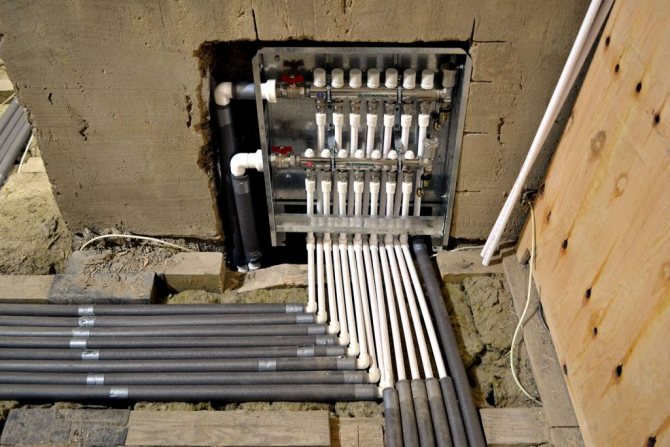

Installation of pipes and radiators
After the boiler is installed, you can start hanging radiators... They are usually fixed under the windows. At the same time, they try to make sure that the distance from them to the floor is at least 7 cm, to the windowsill - 8 cm. There should be at least 3 cm of free space between the wall and the radiator. Fix the radiators to the wall with brackets.
Do-it-yourself piping should be done taking into account the chosen method of connecting the batteries. When installing radiators in country houses, either their diagonal connection or the bottom one is most often used. In the first case, the return pipe is connected to the lower branch pipe of the battery, and the supply pipe is connected to the upper one from the opposite side. In the second, both pipes are connected from below. The actual insertion operation itself produced according to the instructionsattached to the selected type of radiator. A Mayevsky crane or some other similar device is mandatory installed on each battery.
Installing radiators
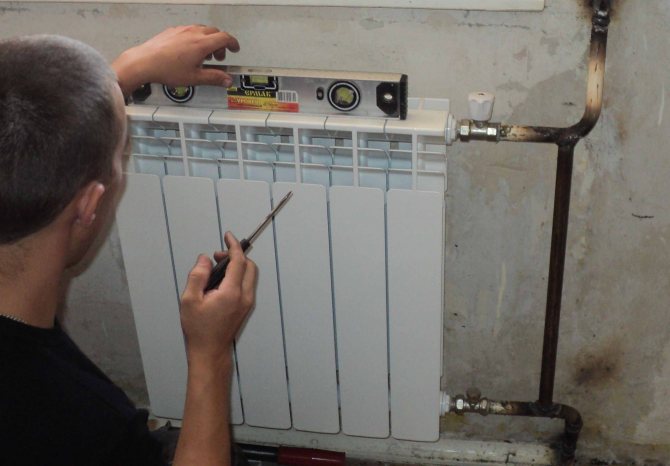

Radiators should be installed as responsibly as possible.
We have already completed the layout and installation of the battery mounting brackets. Now let's start assembling and installing them.
First of all, you need to unscrew the covers (plugs) and prepare the radiator taps. It is better to use polypropylene taps, which are often included with the radiator.
Radiator tap made of polypropylene.
The threaded joint should be greased with Unipak and wrapped with tow. Some plumbers use FUM tape, but tow and paste are more reliable. Apply a generous layer to the thread and wind up linen tow fibers along its course.
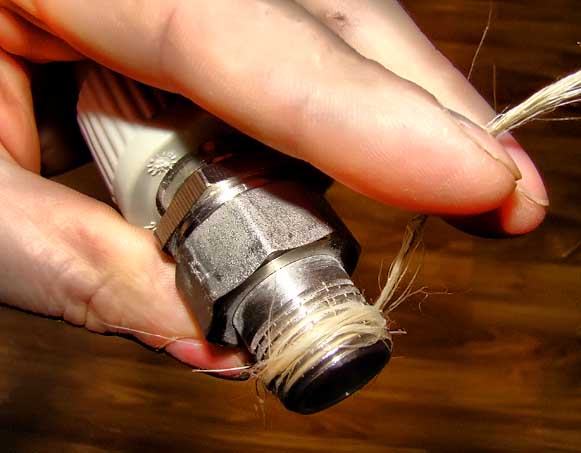

Lubricate the threads with high-temperature paste "Unipack" and wind the tow.
Then we put on the union nut of the radiator valve and screw it first with our hands, then with an adjustable wrench all the way. We put another tap, then the Mayevsky valve, and the last hole is closed with a plug.
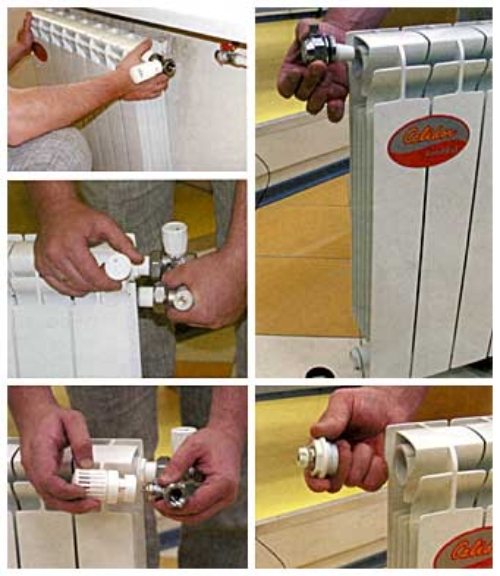

We screw in the taps, the Mayevsky valve and the plug.
Important! It is necessary to coordinate the position of the valves with the device connection diagram: it can be bottom, side or diagonal.
If we have a Leningrad one-pipe system, we perform piping with a bypass. To do this, solder pipe sections and connect them with a thinner pipe:
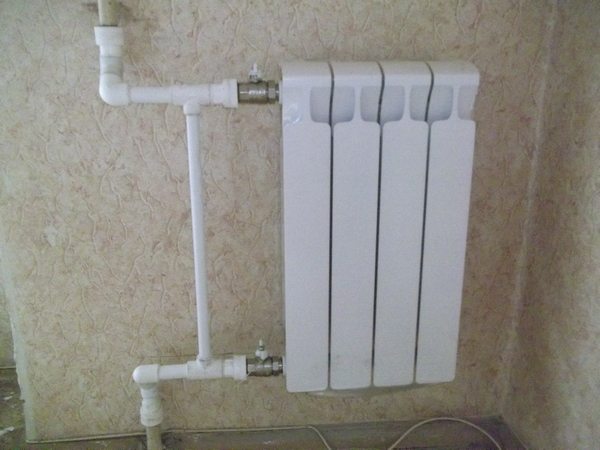

Radiator piping with one-pipe system.
First, we mount the adapters to polypropylene (if needed), then we put the reducing tee from D20 to D16 on one side, then the branch pipe, then the tee on the opposite side. The harness is ready.
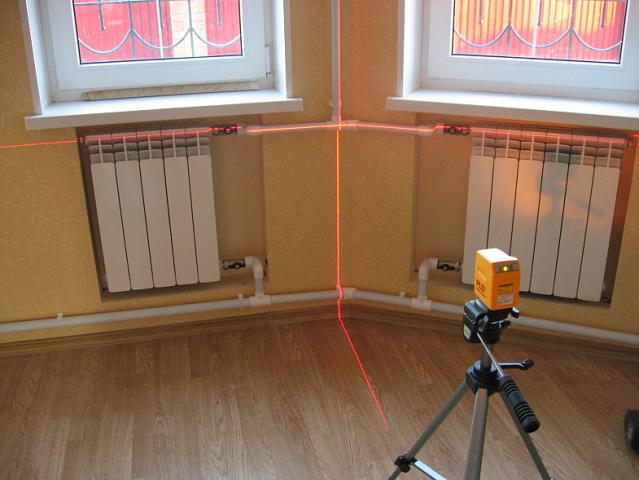

We control the accuracy of work by level.
Finally, we place the device on the brackets and fix it. We check the evenness of the installation with a building level.
How to include a circulation pump in the circuit
This structural element can be installed directly at the stage of assembling the system or cut into an existing structure with a natural flow of water. Recently, pumps have appeared on sale, which can be installed both on the return and on the supply pipe. However, they are quite expensive. Therefore, most of the owners of country houses prefer acquire less hardy models old model. Since the latter do not tolerate elevated temperatures too well, they are installed strictly on a return pipe on a bypass with three taps. In front of the pump itself, in this case, a coolant purification filter is mandatory.

